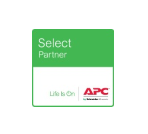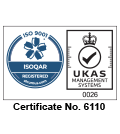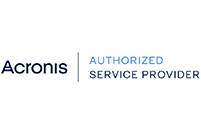We’re living in a critical time with digital transformation causing huge disruption to virtually every industry. Every company is now a technology company. Organisations are having to rethink their operating models and adapt to keep pace with these changes. Chances are your organisation is already invested in a number of business modernisation and transformation initiatives. You might be looking at analytics, working on digital experiences such as mobile apps or even exploring more advanced areas such as IoT or AI.
All of these initiatives are powered by one thing - data. It's data that powers digital transformation. The organisations that will win in this digital age are those who have a better strategy for collecting and harnessing the power of their data. So, if you’re going to invest in any business initiative, you also need to invest in your data platform because your data is a critical asset. It’s the lifeblood of your organisation and your biggest source of competitive advantage. But before you make any investment, there are some important questions you’ll need to answer such as:
- How can you extract business value from your data?
- How will you protect your data?
- How will you cope with data growth?
- How will you manage data complexity?
- How will you ensure legal and regulatory compliance?
Getting answers to these questions will ensure that your data is stored in the right place, at the right time with the right SLAs for your organisation. Let’s drill down further into some of the key data attributes you will need to consider when assessing storage solutions.
Cost
Look beyond the initial capital outlay when assessing costs as your investment decision should be based on the total cost of ownership (TCO) over the life of the solution. If you’re setting a budget, factor in running costs (electricity, cooling, floor space), expansion, refreshes and management overhead to get a true picture of the total costs over the years you expect to use the system.
Capacity
Assess your required storage capacity based on current needs but also forecast future storage requirements to ensure you purchase enough disk space to meet the needs of users and the applications they use. Fortunately, there are free tools that can help you do this effectively by analysing your current systems and producing a report on the available capacity and storage performance. This will help optimise existing capacity and save you money on storage resources that would otherwise go to waste. For future planning, consider any known future projects on the horizon but also the tiers (category) of storage they’ll require as not all data needs treating equally.
Finally, storage techniques such as compression and data deduplication can help reduce required storage capacity by getting rid of unnecessary extra copies of the same file and optimising the amount of space needed to store data.
Speed
File and workload sizes have increased exponentially in recent times so naturally the faster you can process your data the better but speed comes at a cost so you’ll need to decide which of your workloads justify the price premium. There are various speed related metrics to look out for depending on the storage medium. Read and write speeds are important with IOPS (input/output operations per second) widely used as the benchmark for how quickly a given storage device or medium can read and write commands in every second. IOPS is dependent on multiple factors such as the storage interface, RAID level and storage medium (solid state drives SSD are much faster than spinning hard drives). Other measures to factor include latency (the time it takes for data packets to be stored or retrieved), throughput (the rate at which data is transferred to and from the storage media) and bandwidth (the amount of data that can be transferred at any given time).
Security
Given its importance, data protection should be paramount. Security needs to cover both virtual and physical environments with encryption both at rest and in transit to prevent access in the event of a compromise. As well as data protection, you’ll want to ensure there are recovery options in place should disaster strike. IT managers often speak about the 3-2-1 rule - maintain at least 3 copies of your data in 2 different formats with at least 1 copy being held off-site. Some storage appliances come with integrated, turn-key backup and disaster recovery capabilities whereas others require you to bolt-on standalone solutions. Whichever solution you opt for, it needs to be simple to deploy and scale, provide comprehensive protection for a wide range of applications and hypervisors and offer fast performance and rapid recovery capabilities.
Reliability
Clearly you’ll want your data stored on a platform that is robust and resilient so you have access whenever you need it. Reliability is in part determined by the quality of the component parts. Storage solutions that take advantage of the latest technologies can offer dramatic performance improvements over older legacy models. Downtime is something else that you hopefully will rarely encounter but should your storage solution fail, what redundancy measures do you have in place? What warranty and support cover options are available? Are these adequate for your specific business needs? Calculate what an hour of downtime would cost your organisation and compare this with the response time on offer from the vendor to see if you need standard versus premium cover.
Reducing Complexity
The explosion of data is creating big challenges for most organisations. Often, as a business grows, new applications are adopted, new storage systems are added and data ends up trapped in multiple silos limiting its usefulness. Often, the speed at which additional capacity needs to be deployed to keep up with growth is in itself a problem and then there’s the management overhead to factor as well. As valuable as your data may be, unless your processes and infrastructure are optimised, leveraging business value from it will be difficult.
Think about archiving and retention periods as well. You may be required by law to hold on to some data for record keeping purposes; this data will most likely be archived to keep costs down. Can you easily search for and locate old records? How quickly can you retrieve archived data in the event of a data access request? (think GDPR). Given the current rate of technology advancement, your data retention policy may well exceed the useful life of your infrastructure. A hybrid storage solution may make more financial sense than a traditional hardware based platform. Leasing your storage solution rather than buying outright might also warrant consideration and alleviate budget related concerns.
Seek Expert Advice
Clearly there’s a lot to think about when evaluating a data storage platform and we’ve only touched on some of the key consideration areas. Ultimately, your data should be used to help you tackle genuine business problems, unearth new opportunities and enable you to gain a competitive advantage. To achieve all this, you need to look at data in a different way and ask the right questions based both on how you operate now but also with one eye on the future (which is no mean feat).
If you’d like any help with this process, a second opinion or just a sounding board to bounce ideas off, we have a team of storage experts who’d be happy to have a chat.







